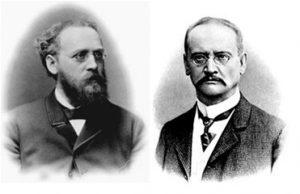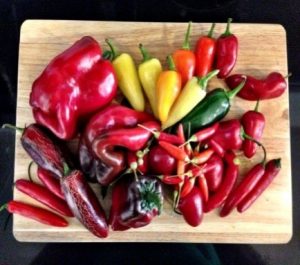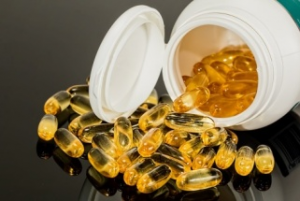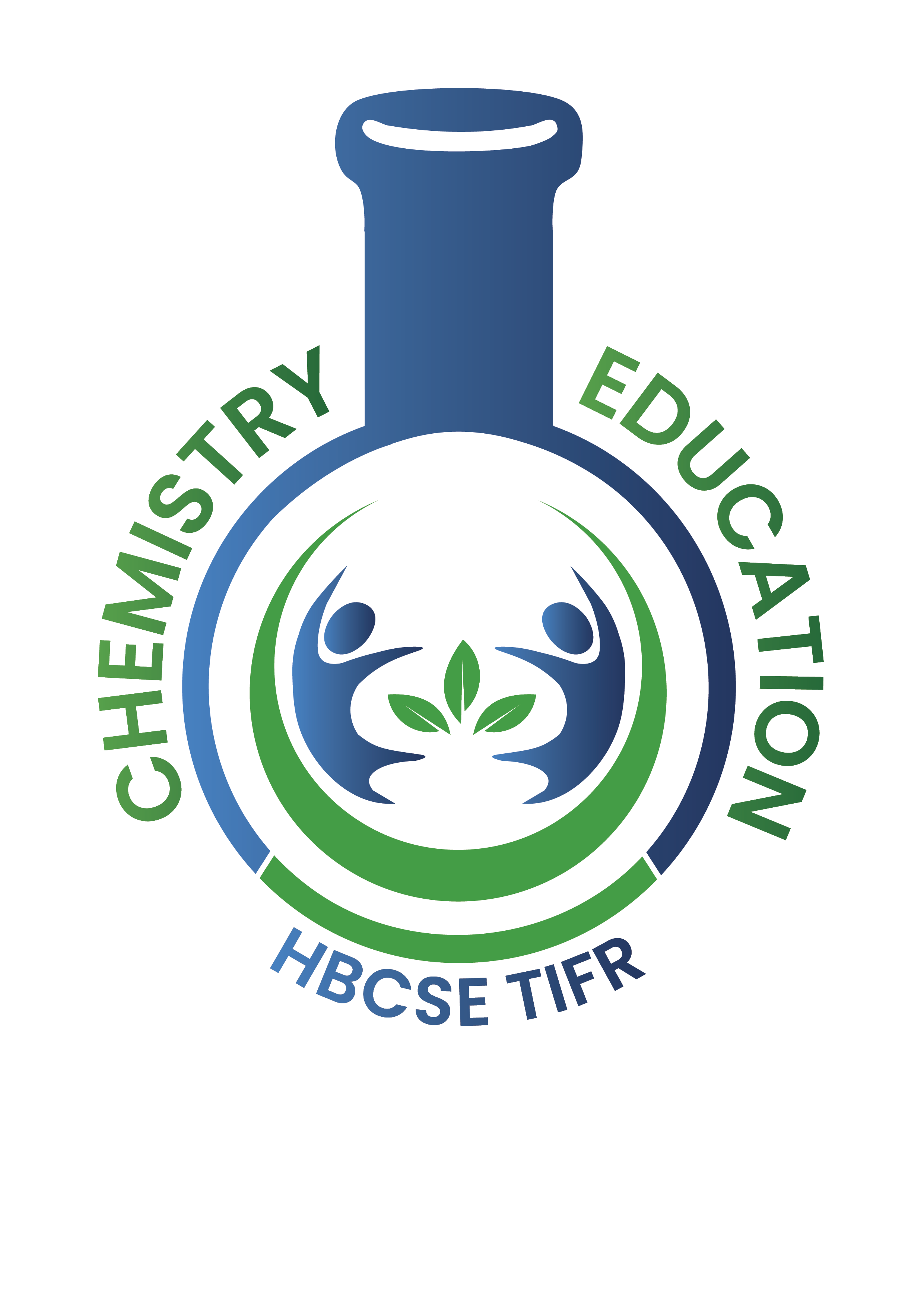
Amides are pervasive in nature and important organic compounds. Medicinal chemistry database reveals amide’s presence in many known drugs. One of the commonly known medicinal amide is paracetamol used to treat fever and mild pain. Apart from its use in medicine, amides are also widely used in textile, paper and polymer industries.
The following experimental task illustrates an example of a laboratory scale amide synthesis which can further be analyzed of its percentage purity using a simple acid-base reaction. Part I involves synthesis of an amide and in part II you will estimate the purity of another amide sample supplied to you.
Synthesis of derivative of amine (Part I)
Amides can be synthesized by reaction between amine (—NH2) and acid chloride (—COCl). This reaction was discovered by two German scientists—Carl Schotten and Eugen Baumann in 1883 and hence the reaction is called Schotten-Baumann reaction. This reaction is carried out in basic medium and at low temperature. The base is required to shift the equilibrium in the forward direction and obtain high yield of the product.

One of the interesting applications of this reaction is synthesis of capsaicin- an active component of chilli peppers. Capsaicin is used as food flavour and also as an analgesic in topical ointments. Examples of ointments containing capsaicin are Neurocreme, Myspar gel, Capsiron, etc.

In this experiment you will use Schotten-Baumann reaction to prepare N-benzoylaniline, also known as benzanilide. Benzanilide is used in the manufacture of perfumes, pharmaceutical products and dyes. For example, benzanilide derivatives are useful in the synthesis of Direct Yellow dyes which is used to dye fabrics, paper and leather. For preparing benzanilide, benzoyl chloride is reacted with aniline in basic condition. Benzoyl chloride must be handled with care as it is lachrymatory. Slow addition of Benzoly chloride is important as the reaction is highly exothermic and to avoid probable side reactions. The crude product, benzanilide is recrystallized to obtain a purified product. The mass of product obtained indicates the efficiency with which the reaction was carried out.
Estimation of benzamide (Part II)
Benzamide is the simplest amide derivative of benzoic acid. Benzamides and its derivatives are in clinical use for decades.
One of the characteristic reactions of an amide is hydrolysis (reaction with water) to form an acid and an amine. However, this reaction is quite slow unless it is catalyzed by a strong acid, alkali or an enzyme. This catalyzed hydrolysis reaction can be used to quantitatively estimate carboxamides.

For this purpose, a known mass of benzamide is hydrolyzed with an excess of alkali and if complete hydrolysis and removal of ammonia during hydrolysis can be ensured, the unconsumed alkali is titrated against a standard acid. Here, one needs to think what steps can be taken to ensure complete removal of ammonia and how will its presence affect the titre value. Also, you have to make sure that the end point of titration is correctly detected and the reaction is complete.
In this laboratory task, you will use the above-mentioned principle to determine the percentage purity (percentage of desired compound in the sample) of the benzamide. The procedure to estimate purity is given below.
Prerequisite (Theory)
Synthesis and reactions of amides
Reactions of amides
Techniques
Slow addition of one solution to another with stirring
Filtration of product using suction
Use of pipette bulb
Titration technique
Preparation of solution in standard flask
References
- Smith, M. B., & March, J. (2007). March’s Advanced Organic Chemistry: Reactions, Mechanisms, and Structure (6th ed.): Wiley- Interscience. https://doi.org/10.1002/0470084960
- Fattori, V., Hohmann, M., Rossaneis, A., Pinho-Ribeiro, F., & Verri, W. (2016). Capsaicin: Current Understanding of Its Mechanisms and Therapy of Pain and Other Pre-Clinical and Clinical Uses. Molecules, 21(7), 844. https://doi.org/10.3390/molecules21070844
- Capsaicin brands in India | Drugs Update India. Retrieved April 28, 2020, from http://www.drugsupdate.com/brand/showavailablebrands/980/2
- Simu, G. M., Chicu, S. A., Morin, N., Schmidt, W. & Sisu E. (2004). Direct Dyes Derived from 4,40-Diaminobenzanilide Synthesis, Characterization and Toxicity Evaluation of a Disazo Symmetric Direct Dye. Turkish Journal of Chemistry, 28, 579-585.
- Image Source: Public domain images and free stock images from pixabay.
Part I: Preparation of derivative
Glassware
| ▪ Beaker | 1 |
| ▪ Cork | 1 |
| ▪ Filter paper (circles) | 4 |
| ▪ Funnels | 2 |
| ▪ Glass rod | 1 |
| ▪ Measuring cylinder (10 mL) | 1 |
| ▪ Measuring cylinder (25 mL) | 1 |
| ▪ Syringe (1 mL) | 1 |
| ▪ Spatula | 1 |
| ▪ Water bath (Metal) (Plastic) | 1 1 |
| ▪ Wash Bottle | 1 |
Chemicals
| ▪ 5% NaOH | |
| ▪ Ethanol | |
| ▪ Aniline(Density– 1.021 g/L) | |
| ▪ Benzoyl chloride |
Part II: Hydrolysis of benzamide
Glassware
| ▪ Burette | 1 |
| ▪ Conical flask (100 mL) | 3 |
| ▪ Funnel | 2 |
| ▪ Pipette (25 mL) (10 mL) | 1 1 |
| ▪ Standard Flask | 1 |
Chemicals
| ▪ Benzamide | |
| ▪ HCl | |
| ▪ NaOH (For blank titration) | |
| ▪ NaOH (For sample) | |
| ▪ Phenophthalein |
(molarity of HCl will be supplied to you)
Hazard Symbols
Flammable ![]()
Corrosive to skin ![]()
Toxic ![]()
Irritant ![]()
Health Hazard ![]()
Part I- Procedure:
1 mL of aniline is supplied to you in a vial. Transfer the contents of the vial to a 100 mL conical flask. Add 20mL of 5% NaOHsolution with the help of a measuring cylinder. Using the syringe supplied, transfer the total quantity of the supplied benzoyl chloride to the conical flask. Insert the tip of the needle into the solution and slowly release the benzoyl chloride with constant shaking (Be careful while adding!).After the entire addition is done, cork the flask and keep it in a water bath. Shake the contents of the flask vigorously for 10 to 15 minutes. During this period, loosen the cork twice or thrice to release the fumes. Filter the product and wash it with 15 mL of cold water. Keep the filter papers containing the product on a tissue paper supplied to you so that excess of water is absorbed by tissue paper.
Crystallization of benzanilide
The product is recrystallised using warm ethanol. With help of a spatula, transfer the crude product to a 100 mL beaker. Add 20 mL of ethanol to the product and heat the beaker on a water bath for 1 or 2 minutes to dissolve it. (In case the product does not dissolve, add an additional 1 or 2 mL of ethanol). Remove the flask from water bath and allow the content to cool for 10 minutes. Filter the purified derivative carefully so that maximum of the solvent is removed. Remove the product from the funnel and allow the product to air dry for 20 to 30 minutes. Then transfer the contents to a pre-weighed butter paper and take it for weighing or ask the expert to weigh your product.
Part (II) – Procedure:
Blank Titration
You are given NaOH solution in a bottle (Labeled for Blank Titration). Pipette out 10 mL of this NaOH solution and titrate it with HCl solution using phenolphthalein as indicator. You are expected to take maximum three readings. In case you get two consistent reading, you need not take the third reading. This is your reading A.
Sample Titration
You are supplied with 1.8 g of benzamide sample in a conical flask. With the help of pipette, add 25 mL of NaOH (Labeled for Sample) to the conical flask. Place a funnel on top of the
flask and boil the content for 20 minutes. Remove the flask from hot plate and cool the content for 10 minutes. Transfer the contents to a 100 mL standard flask and dilute the solution to 100 mL using distilled water. This dilution is done so that the concentration of NaOH matches with the concentration of the NaOH solution used in the blank titration.
Titrate 10 mL of the diluted solution against HCl using phenolphthalein indicator. You are expected to take maximum three readings. In case you get two consistent reading, you need not take the third reading. This is your reading B
Part I
1.1
Mass of the butter paper
| g |
Mass of (butter paper + product)
| g |
Mass of product
| g |
1.2
Colour and nature of the purified product.
1.3
Write the balanced chemical equation of reaction involved in the preparation of benzanilide, taking into account all the reagents used for synthesis.
1.4
(a)
Theoretical yield of the product on the basis of the mass of aniline
(b)
The yield obtained as a percentage of theoretical yield.
| % |
1.5
At higher temperatures
(i)
substantial amount of benzoyl chloride will undergo hydrolysis

(ii)
rate of reaction will increase

(iii)
initially formed benzanilide will undergo hydrolysis

(iv)
N,N-dibenzoylaniline will be formed

1.6
Can you use ammonia as a base in this reaction?
Yes

No

Part II
Concentration of HCl:
| M |
| Titration Readings | Blank Titrations A |
Sample Titrations B |
||||
|---|---|---|---|---|---|---|
| Initial burette reading (mL) | ||||||
| Final burette reading (mL) | ||||||
| Difference (mL) | ||||||
| Constant Reading mL | Constant Reading mL | |||||
1.8
Write a balanced chemical equation for the reaction involved in the titration
1.9
Calculate the amount of benzamide in mmols and in grams in the supplied sample. Hence calculate the purity of the sample supplied.
1.10
With respect to ease of hydrolysis the correct statement is
(i)
RCONH2 > RSO2NH2 > R-COOCH3

(ii)
RSO2NH2 > RCONH2 > R-COOCH3

(iii)
R-COOCH3 > RCONH2 > RSO2NH2

| g |
Under Construction: will be available soon
